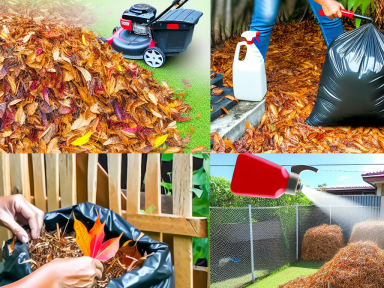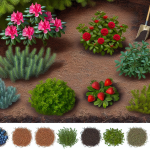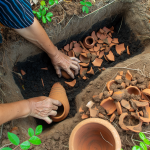Understanding Leaf Mold
Leaf mold, a remarkable soil conditioner and natural additive, is simply decomposed leaves. Unlike traditional compost, which involves a balance of green and brown materials, leaf mold is 100% brown material, composed purely of fallen leaves. This makes it an excellent, low-nutrient organic matter that provides exceptional benefits for soil health and plant growth.
Benefits of Leaf Mold
- Water Retention: Leaf mold can hold up to 500% of its weight in water, making it an excellent choice for improving water retention in garden soil, especially in sandy areas.
- Soil Structure: By improving soil structure, leaf mold helps create an environment where roots can easily spread. It enhances aeration and drainage in clay-heavy soils, preventing compaction.
- Microbial Activity: The decomposition process of leaf mold supports a thriving population of beneficial microbes, which enhances nutrient uptake for plants.
How to Make Leaf Mold
Creating leaf mold is a straightforward and cost-effective process that requires minimal effort but rewards with rich, crumbly, and invaluable soil conditioner.
1. Collect Leaves
Start by collecting fallen leaves in autumn. Shred the leaves using a lawnmower or leaf shredder to speed up the decomposition process. Shredded leaves break down faster, producing leaf mold in a shorter period.
2. Bag Up or Pile Up
Choose one of the following methods:
- Bag Method: Fill black garbage bags with the shredded leaves, add a small amount of water to moisten them slightly, and then loosely tie the bags. Poke a few holes in the bags to allow airflow.
- Pile Method: Create a leaf pile in a shaded, out-of-the-way area of your garden. Enclose the pile with wire fencing to prevent it from blowing away.
3. Maintain Moisture
Keep the leaves moist but not waterlogged. Check periodically, especially during dry spells, and add water as needed. Leaf mold decomposition relies on sufficient moisture, so this step is crucial.
4. Patience and Time
Unlike compost, which can be ready in a matter of months, leaf mold takes longer to mature. Typically, it will take 6 to 12 months, sometimes up to 2 years, depending on the leaf type and conditions. The wait is worth it, as the end product is a valuable soil conditioner.
Using Leaf Mold in Your Garden
Soil Amendment
Work leaf mold into the top few inches of garden soil to improve its structure, water retention, and microbial activity. This is particularly beneficial in vegetable beds and flower gardens where rich, well-drained soil is crucial.
Mulch
Apply a 2-3 inch layer of leaf mold as mulch around plants. It helps retain moisture, suppress weeds, and adds organic matter to the soil as it breaks down further.
Potting Mix
Mix leaf mold with equal parts garden compost and garden soil to create a rich potting mix for container plants. This mix ensures good drainage, aeration, and nutrients, creating an ideal environment for potted plants to thrive.
The art of using leaf mold can transform your garden, providing healthier soil, more resilient plants, and a more sustainable approach to gardening. By harnessing the power of natural leaf decay, you are giving your garden one of the best amendments it can get.



GIPHY App Key not set. Please check settings